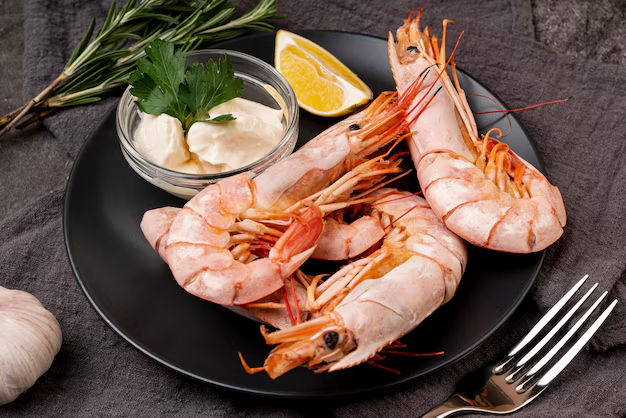How Long is Cooked Shrimp Safe in the Fridge? Everything You Need to Know
Imagine you’ve just enjoyed a delightful seafood dinner with succulent shrimp as the star. But what about the leftovers? You may be wondering how long you can safely keep cooked shrimp in your refrigerator before it’s time to toss it. Proper storage is key to maintaining food safety and quality. Let's dive into the essential details and guidelines for storing cooked shrimp.
The Shelf Life of Cooked Shrimp in the Refrigerator
Cooked shrimp can generally be stored safely in the refrigerator for three to four days. This timeframe is an established norm in food safety circles as long as the shrimp has been stored correctly at or below 40°F (4°C). Leaving shrimp out at room temperature for more than two hours increases the risk of bacterial growth, which can lead to foodborne illness. Therefore, prompt refrigeration is crucial.
Factors Affecting Shrimp Shelf Life
- Temperature Control: Maintaining a consistent refrigerator temperature is vital. Regularly check that your fridge keeps at the recommended 40°F (4°C).
- Storage Conditions: Use an airtight container to limit moisture and bacteria exposure.
- Initial Quality: Freshness matters. Starting with high-quality, properly cooked shrimp can extend shelf life.
Storing Cooked Shrimp Correctly
To extend the freshness and safety of your cooked shrimp, it’s essential to store it correctly. Here are some guidelines:
Immediate Refrigeration
- Prompt Storage: After cooking, allow shrimp to cool slightly, then refrigerate within two hours.
- Separation: Store shrimp separately from other foods to avoid flavor and odor transfer.
Use Proper Containers
- Airtight Containers: Use containers with tight seals to minimize air exposure and moisture loss.
- Glass or BPA-Free Plastic: Opt for materials that won’t absorb odors or stains.
Portion Control
- Smaller Portions: Consider storing shrimp in portion-sized containers for easier meal planning and reheating.
Freezing Cooked Shrimp: An Alternative Storage Method
If you don't plan to eat your shrimp within a few days, freezing is an excellent way to extend its shelf life for up to three months. Here’s how:
Freezing Steps
- Cool Completely: Ensure shrimp is completely cooled before freezing.
- Pack Well: Use freezer bags with minimal air or vacuum seal for optimal quality.
- Label and Date: Mark the date on the container to know how long it’s been stored.
Thawing Methods
- In the Refrigerator: Plan ahead to thaw shrimp safely in the fridge overnight.
- In Cold Water: For quicker thawing, submerge the sealed package in cold water, changing the water every 30 minutes.
Recognizing Spoiled Shrimp
Understanding spoilage signs is crucial for food safety. Look out for:
- Off Odors: A strong, sour smell is a sure sign of spoilage.
- Discoloration: Shrimp should not appear dull or have unusual color changes.
- Texture Changes: Sliminess or a mushy texture indicates it’s time to discard.
Tips to Avoid Spoilage
- Watch Expiry Dates: Be mindful of the date shrimp was purchased or cooked.
- Plan Meals: Use shrimp in dishes promptly to prevent waste and health risks.
Cooking and Reheating Shrimp Safely
Proper reheating is as crucial as proper storage. Reheat shrimp to an internal temperature of 165°F (74°C) to ensure safety.
Best Reheating Practices
- Skillet: Use a skillet over medium heat with a splash of oil or water.
- Microwave: Cover and microwave on low power to retain moisture.
- Oven: Wrap shrimp in foil and reheat at a low temperature.
Creative Ways to Use Leftover Shrimp
Leftover shrimp doesn’t have to be a mundane repeat. Here are some delicious and inventive ideas to spice up your meals:
Meal Inspiration
- Shrimp Tacos: Add shrimp to tacos for a quick weeknight dinner.
- Stir-Fry: Toss with vegetables and soy sauce for a speedy stir-fry.
- Salads: Enhance your salad with chilled shrimp, avocado, and greens.
- Pasta: Mix into pasta with a lemon and garlic sauce for a fresh dish.
Essential Consumer Tips 📝
- 🕒 Refrigerate Promptly: Store shrimp within two hours of cooking.
- 📏 Use Proper Containers: Seal shrimp in airtight containers or bags.
- ❄️ Freeze for Longevity: Freeze if you intend not to eat within three days.
- 👃 Check for Off Odors: Spoiled shrimp often have a strong, sour smell.
- 🥗 Get Creative: Use shrimp in diverse recipes to enjoy varied meals.
Closing Thoughts
Cooked shrimp can be a safe and delightful addition to your meal plans if handled with care. By refrigerating promptly, storing correctly, and being vigilant about spoilage signs, you can enjoy your shrimp without worry. So next time you have leftover shrimp, experiment with different recipes while ensuring your family’s health and safety. Understanding these storage guidelines isn't just about keeping food from spoiling; it's about making every meal as delicious and safe as the first time it was cooked.
